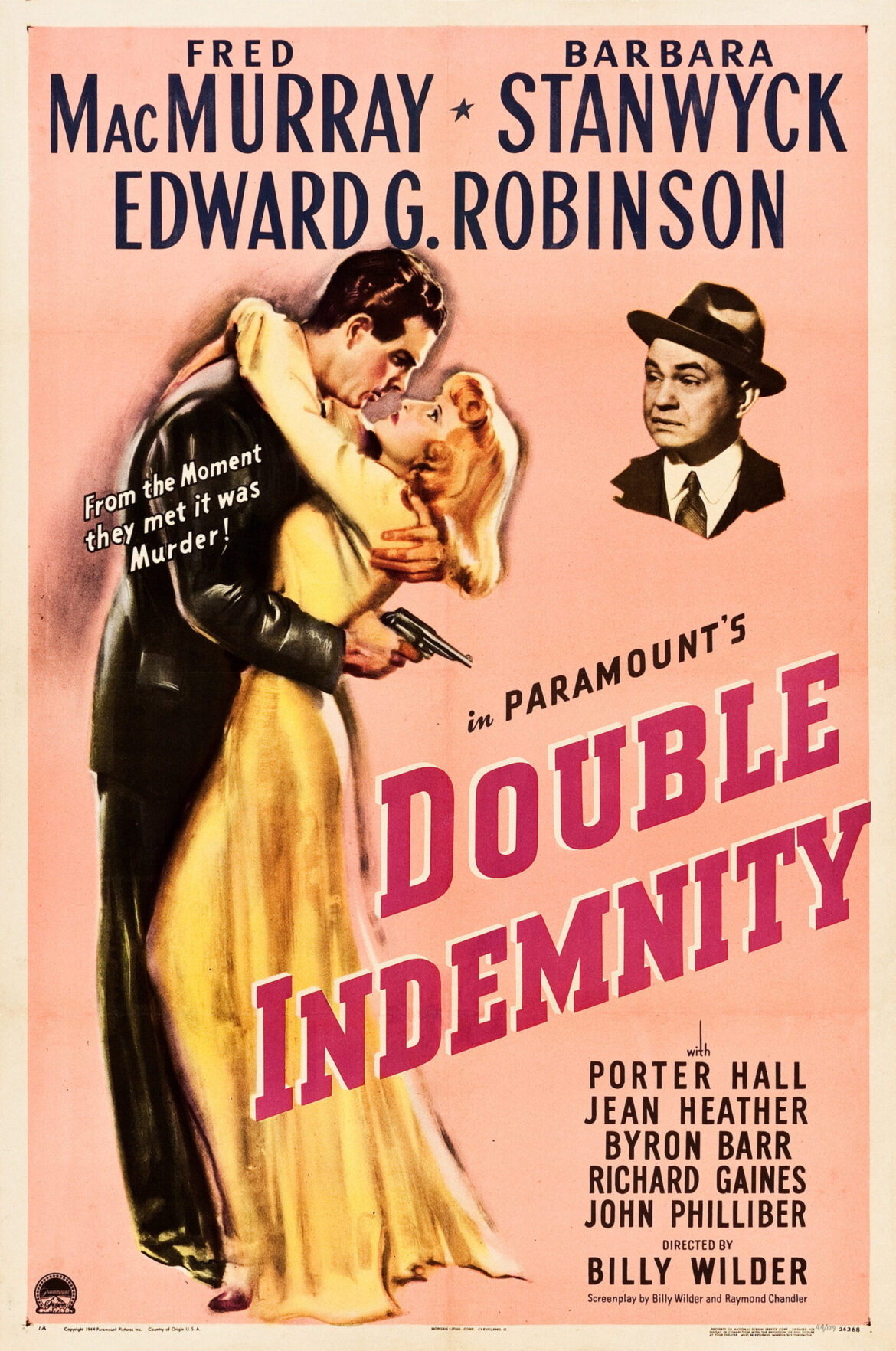Double Indemnity (1944) – A Masterpiece of Film Noir
Type: Movie
Country: USA
Genre: Film Noir, Crime, Drama
Release Date: September 5, 1944
Duration: 107 minutes
Director: Billy Wilder
Production Companies: Paramount Pictures
Cast: Fred MacMurray, Barbara Stanwyck, Edward G. Robinson
Quick Review:
Billy Wilder’s “Double Indemnity” (1944) is a quintessential film noir that masterfully blends suspense, moral ambiguity, and a chilling narrative into a captivating cinematic experience. With a sharp script co-written by Wilder and Raymond Chandler, stellar performances by Fred MacMurray and Barbara Stanwyck, and a gripping storyline, the film has become a defining example of the genre. Its influence on cinema is profound, and it remains a must-watch for fans of classic crime dramas.
Plot Summary:
“Double Indemnity” follows the story of Walter Neff (Fred MacMurray), an insurance salesman who becomes entangled in a deadly scheme orchestrated by Phyllis Dietrichson (Barbara Stanwyck), a seductive housewife. Phyllis persuades Walter to help her murder her husband and make it look like an accident in order to collect on a double indemnity insurance policy. As the plot unfolds, Walter and Phyllis’s plan begins to unravel, leading to a tense and morally complex resolution.
Walter’s involvement in the crime and his subsequent interactions with his boss, Barton Keyes (Edward G. Robinson), who is also an insurance claims adjuster, add layers of intrigue and suspense. The film explores themes of greed, deception, and the consequences of living a lie, making it a compelling study of human nature and crime.
Characters and Performances:
- Fred MacMurray (Walter Neff): MacMurray delivers a standout performance as Walter Neff, capturing the character’s moral decline and internal conflict with nuance and depth. His portrayal of a man seduced by greed and passion is both convincing and tragic.
- Barbara Stanwyck (Phyllis Dietrichson): Stanwyck’s portrayal of Phyllis Dietrichson is iconic, showcasing her as a complex femme fatale. Her performance is marked by a blend of seductiveness and cunning, making her one of the most memorable villains in film noir history.
- Edward G. Robinson (Barton Keyes): Robinson’s portrayal of Barton Keyes provides a moral anchor in the film. His performance as a shrewd and perceptive insurance adjuster adds depth and gravitas to the story, making him a key figure in the film’s resolution.
Direction and Cinematography:
Billy Wilder’s direction in “Double Indemnity” is exemplary, characterized by its tight pacing, sharp dialogue, and innovative use of noir elements. The film’s cinematography, spearheaded by John F. Seitz, employs striking chiaroscuro lighting and shadowy compositions to enhance the film’s dark and suspenseful atmosphere. The use of low-key lighting and dramatic angles contributes to the film’s sense of foreboding and moral ambiguity, creating a visually compelling narrative.
Music:
The film’s score, composed by Miklós Rózsa, complements its noir aesthetic with a moody and evocative musical backdrop. The music enhances the film’s tension and emotional impact, effectively underscoring the suspenseful and dramatic moments. Rózsa’s score is a key element in creating the film’s haunting and unforgettable atmosphere.
Why It Endures:
“Double Indemnity” endures as a classic of film noir due to its masterful combination of suspenseful storytelling, complex characters, and moral exploration. Its innovative narrative structure, sharp dialogue, and the powerful performances of Fred MacMurray and Barbara Stanwyck have cemented its status as a seminal work in the genre. The film’s exploration of greed and deception remains relevant, and its influence on subsequent noir films and crime dramas is profound.
In Conclusion:
“Double Indemnity” (1944) is a landmark film in the noir genre, showcasing Billy Wilder’s directorial prowess and the compelling performances of its lead actors. With its intricate plot, morally complex characters, and unforgettable visual style, the film continues to captivate audiences and serve as a definitive example of classic film noir. Its enduring appeal and influence on cinema make it an essential viewing experience for both fans of the genre and film enthusiasts alike.


